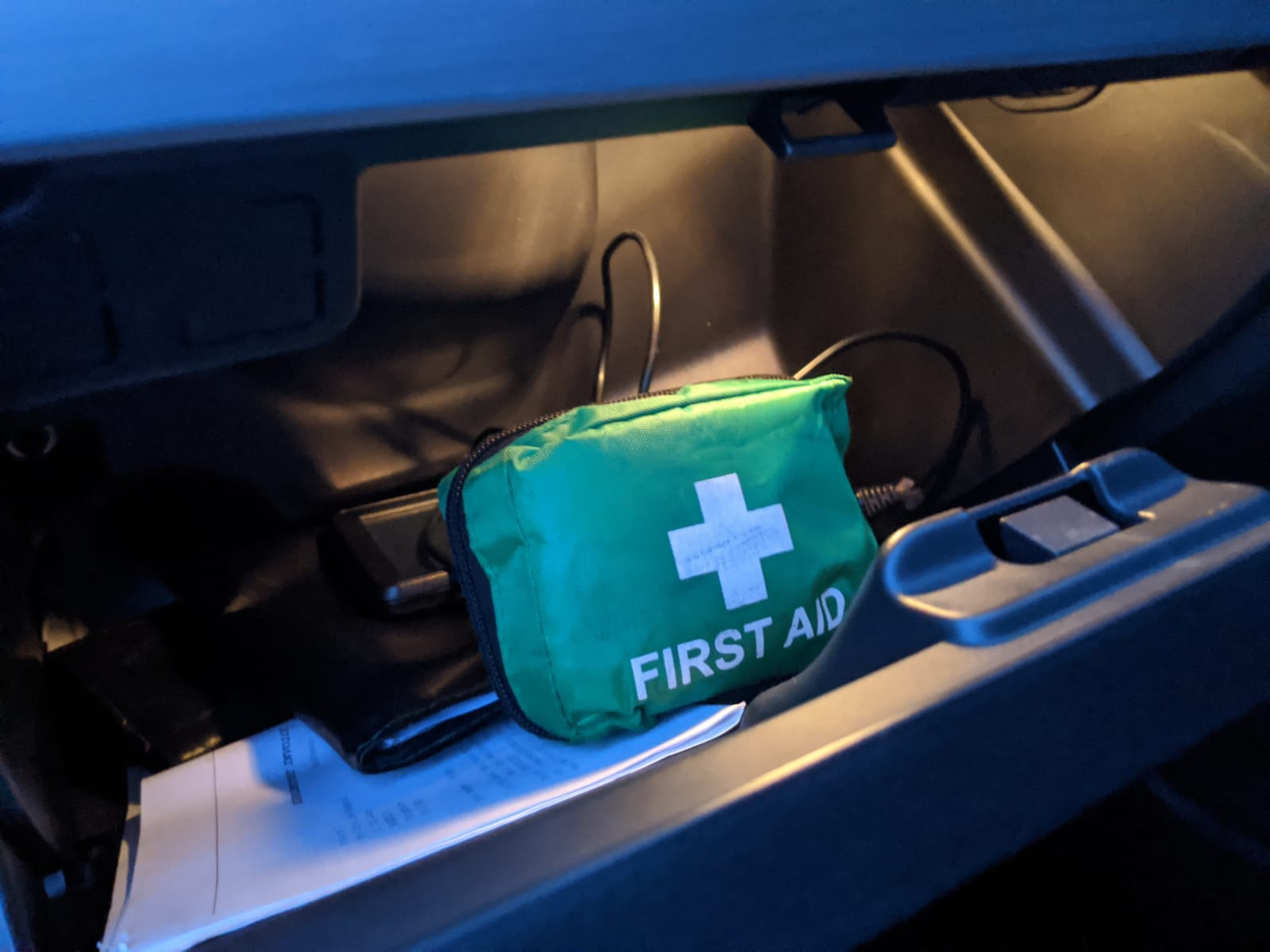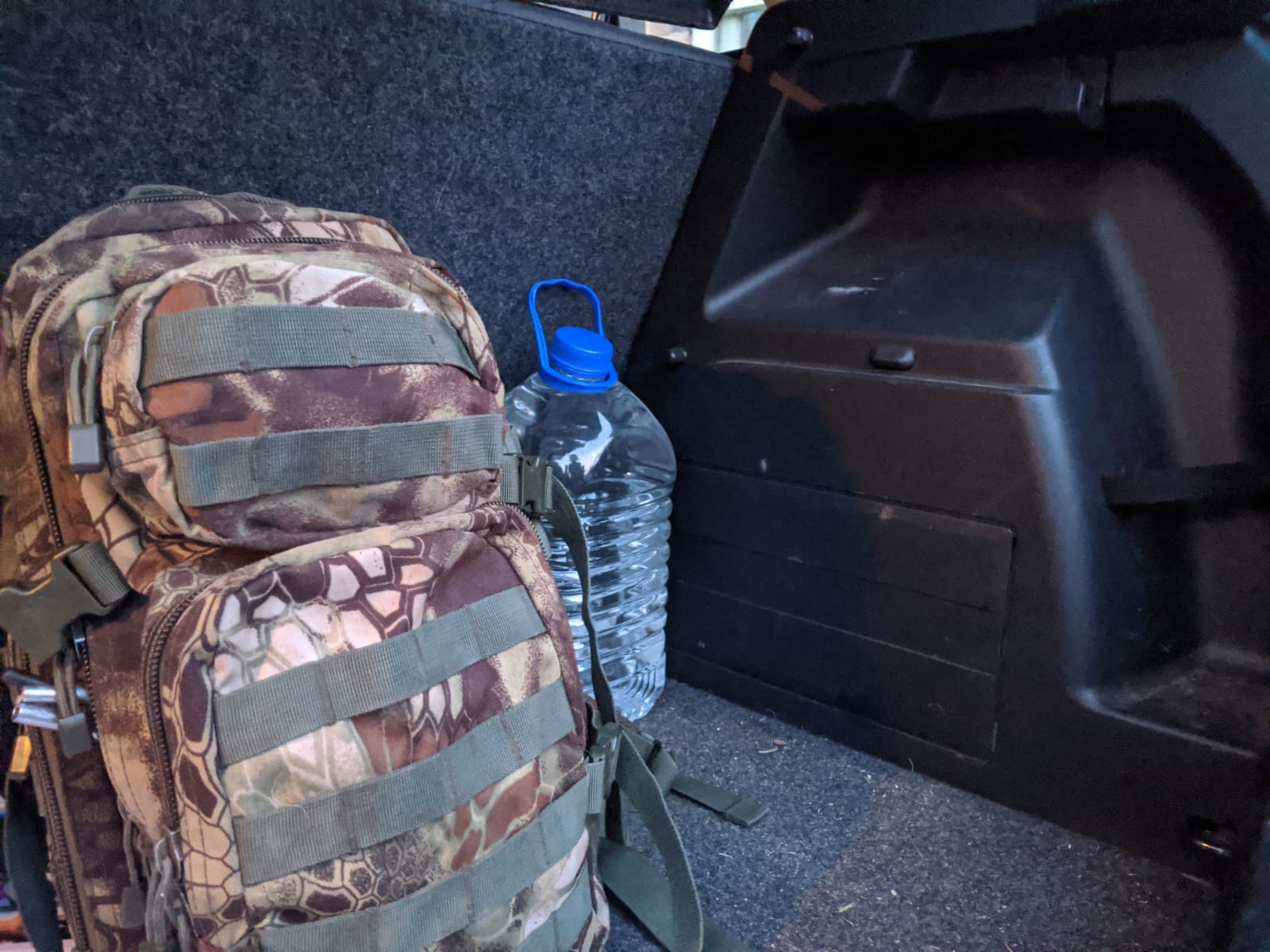Vehicle Defense
A vehicle can be anything from a car or motorbike to an aeroplane. Vehicles for the average person are a means to get from A to B or to and from work. What's not thought about is that of your vehicle assisting you in terms of an emergency. We vastly overlook this, and relay and assume on the emergency services for help.
Your vehicle SHOULD be ready for a bugout situation.
Operating your vehicle as a standalone defence fortress will serve you in the long term. Knowing the pressure points of vehicles, how much the engine can take, the safety ratings, and so on will benefit you in the long run. In this new series of Vehicle fortification, we will look into many aspects of Vehicle defence, escape, and protection.
Adding netting to the back of the passenger seats adds the ability for the occupant to store emergency gear that would otherwise be sealed away in the bugout. The emergency netting can be store brought or made.
One way to fortify your vehicle is to add more storage. Extra storage can be added through the use of netting, which can be added to the back of the headrest for more storage methods
A great suggestion is to make the netting of 550 paracords. Paracord contains strands of super-strong material. The 550 part of the name corresponds to the amount of weight it can hold prior to breaking. The paracord is made up of 7 strands encased in a lace-like form. In more advanced versions of paracord, 8 strands are added instead of 7. The 8th strand is a flammable strand, which can take a flame, and burn for a long time, so consider firecord for the fire kit also.
Passenger seat defence storage contents.
- Glow sticks/ chem lights - for vehicle blackouts, or low light situations. Especially red. (Low light-emitting)
- First aid kit - basics of first aid, including powered drinks such as coffee, tea, vitamin C powder.
- High energy bars - such as protein or sports bars.
- Basic fire kit - Ferro rod, lighters, tinder, Infernodust, cotton wool, and vaseline balls.
The glow sticks or chemical lights are an extremely reliable, easy source of light. They're mostly waterproof, with the added benefit they last for hours and emits a good level of light. We've suggested red light, due to it keeps insects away, and offers a low-level light source, free from detection from hostiles.
First aid kits always offer the safety net that when an injury occurs, you have the means to fix it. A standard first aid kit contents are things such as safety pins, bandages, plasters, Alcohol Swabs. Antibiotic Ointment, gauze pads and so on. Why not add powered drinks too? These can offer a good morale boost and can help your vitamin C intake through powdered form.

High energy bars should be used when energy is needed for short bursts, such as scouting locations, escaping danger, or trekking. The high energy bars are a way to "inject" a burst of fuel into your body. X2 of these should suffice, and offer a good energy source for when it's most needed.
The basic fire kit gives the occupant a means to create fire. The fire made from this kit offers the ability to boil water, create heat, and to signal if needed. Fire kits should contain lighters, fatwood, matches, Hexi tabs, small bits of kindling, and a Ferro rod and a striker, as well as means for the fire to keep burning such as cotton wall and Vaseline balls.
Boot/trunk
The boot/trunk should be the main storage in your car. The boot should be able to store your Bug out bag along with other essentials.
Water supplies. - Your car boot should contain enough water to last for at least two weeks. Large Jerry cans or 5L containers are great for holding water along with transporting it across distance.
A quick tip: Change the water stored every week to keep it fresh.

Dried food - Dried food such as pasta, rice, noodles, crisps, etc, provide energy. Energy is something you need to function. These foods have a long shelf life and are easy to store.
Clothes change - A change of clothes is vital. Having fresh clothes, in what may be a prolonged period of time of lockdown/isolation is vital to vehicle fortification. Add blankets to the boot section of your vehicle as well to ensure warmth throughout the night. If possible, include a tarp to keep the contents of the boot dry. Nothing is worse than finding your supplies ruined, by a simple mistake.
Portable gas cooker
The basic camping cooker with the disposal of gas canisters is a quick way to heat up water/food quickly and efficiently. You can carry a larger gas bottle, but doing so will weigh your car down more and pose more of risk for you and your car if on fire.
Tactical spade/ Spade
A spade is great for digging your way out of snow or thick mud. It's advisable to invest in a tactical spade, however. Tactical spades sometimes have an edge which can be used to even chop wood in extreme circumstances. Tactical spades are sometimes foldable too, offering the ability to store it away easily.
Top tip: As obvious as this sounds don't forget basic utensils. Along with a plastic bowl and cup. You're only going to beat yourself up over forgetting the most basic things.
Glove compartment
The glove compartment should be the first thing you open if needing emergency supplies.
- Mini medical kit
- Sugar boosts such as chocolate/jelly
- Caffeine gum
- Bottled water
The mini Medical kit is something that I would go 'overkill' on. Add large bandages, tourniquets, bleed kits, and so on. Along with aspirin, and quick medical supplies.
Sugar boosts along with the caffeine gum are used for periods of time where you need to stay alert. Staying alert, or suddenly needing to be alert may be vital to your survival or your groups.
Bottled water is self-explanatory. Hydration is key.
We will go into defensive measures in later additions of this series.
In the next article of this exclusive VIP Pateron series. We will discuss vehicle defence.
Including:
- Vehicle emergency countermeasures.
- Vehicle defence from hostiles.
- Concealment of your vehicle and grey vehicle techniques to follow.